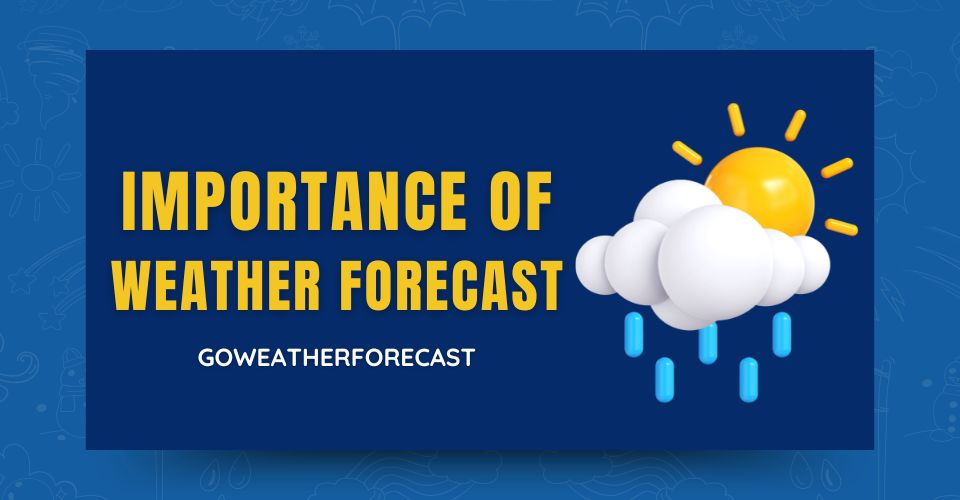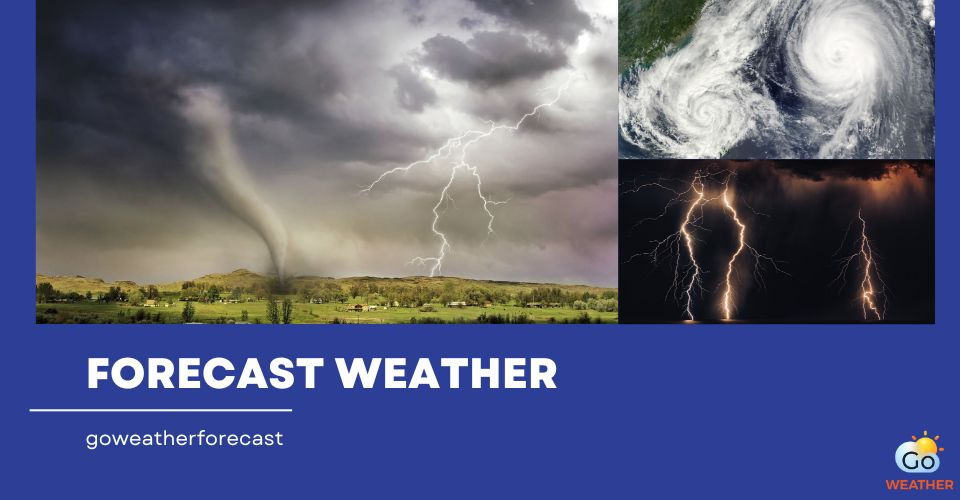Understand Weather News: 7 Basic Weather Elements You Must Know
.jpg)
How to understand weather news?
Basic Weather Elements in Weather News
Air Temperatures
When you wonder “what is the weather like today,” air temperature or just temperature is often the first condition you may take notice of. Air temperature is generally used to measure how cold or hot the air is.
A 24-hour calendar day or full day's forecast will discuss two specific temperatures: a daytime high and a nighttime low.
.jpg)
Air temperature
Knowing the max and min temperatures at what time of day is just as important as knowing what they will be. As a rule of thumb, you should expect the high to happen near 3 or 4 pm local time, and the low should be near sunrise the following day.
Probability of Precipitation (Chance of Rain)
Precipitation is the weather condition in the weather news you cannot leave out. This element refers to the likelihood of rain (represented in a percentage) at a spot in your forecast area.
The formula for precipitation is P = C*A ( C means % Confidence of meteorologist; A means % area).
.jpg)
Chance of rain
For example, on a TV forecast channel, you see a 50% chance of rain tomorrow. This means that the next day will rain, with a 50% chance for the whole day or at a certain time in the day.
It can be 100% confident of meteorologists multiple 50% areas; that’s a 50% chance of rain in half of your forecast area.
In another case, it is only 50% sure that precipitation will happen in the whole area (100%). The probability of precipitation is still 50%.
Therefore, the correct way to interpret this forecast is that there is a 50% chance that rain will occur at any given point in the area.
Sky Conditions (Cloudiness)
Sky conditions, or cloud cover, show you whether the sky will be clear or cloudy throughout the day.
Actually, clouds influence the air temperature. They represent the amount of the sun’s energy that comes to and heats the Earth’s surface during the day and the amount of this heat after getting released from the surface back out into space at night.
.jpg)
Cloudiness
For example, thick stratus clouds block sun rays, which may produce a light drizzle or a small amount of snow. Meanwhile, the heat from the sun can penetrate wispy cirrus clouds to warm the atmosphere.
You can learn more about different types of cloud and their characteristics in our blog for more information!
Winds
Winds in the weather forecast represent the direction of winds blowing. Sometimes, weather news will not mention wind speed outright. Instead, they will use descriptive words to suggest it.
Whenever you see or hear these descriptions, you can understand those speeds based on the table below:
|
Forecast Terminology of Wind Intensity |
Wind Speed |
|
Calm |
0 mph |
|
Light/Variable |
5 mph or less |
|
-- |
5 - 15 mph |
|
Breezy (if mild weather) Brisk (if cold weather) |
15 - 25 mph |
|
Windy |
25 - 35 mph |
|
Strong/High/Damaging |
40+ mph |
Besides, the name of the wind is dubbed the direction in which the wind blows directly into your face.
Moreover, for general purposes, the wind direction is named to eight compass points: N, NE, E, SE, S, SW, W, and NW. Also, these directions can be divided into more specific directions, with 16 compass points, with the addition of NNE, ENE, etc.
If more detailed and precise, meteorologists will report the winds at 36 points of the compass in 10-degree increments: 360 degrees (due north), 350 degrees (very slightly west of due north), 340 degrees, etc.
Related:
Pressure
Another thing about the weather news you should also focus on is pressure. Through the pressure, you can assess whether the weather is settling down or storms are brewing.
.jpg)
Pressure is sometimes discussed in the weather news
To be detailed, if pressure is increasing or is over 1031 millibars (30.00 inches of mercury), it means that the weather is settling. On the other hand, the pressure drops or is near 1000 millibars, which implies rain may be approaching.
Dewpoint
Dewpoint does not tell how warm or cool the air is. Instead, it is the temperature the air needs to be cooled to (at constant pressure) in order to achieve a relative humidity (RH) of 100%.
At that temperature, the air can not keep more water in the form of gas.
If the air continued to be cooled even more, water vapor would have to turn out in a liquid form, which establishes fog or precipitation.
.jpg)
Dewpoint does not tell how warm or cool the air is
When reading weather forecasts, you will see the dewpoint will always be lower than or equal to the current air temperature, never higher than it.
In a circumstance where the dew point equals the current air temperature, the air is saturated, and humidity is 100% (that is, the air is saturated).
To sum up, the higher the dew point increases, the higher the amount of moisture is contained in the air.
Humidity
The humidity indicator shows the concentration of water vapor existing in the air, which is generally invisible to the human eye.
Relative humidity is one of the important weather elements because this indicator tells us the occurring possibility of precipitation, dew, or fog. The closer RH is to 100%, the higher the chance of rain is.
Furthermore, humidity is also a cause for everyone's discomfort in hot temperatures. It can make air temperatures much hotter than they actually are.
.jpg)
Humidity
Which Channel Should You Read Weather News?
Understanding some basic weather elements in weather news, but whether the weather forecasts you read are correct or not. Which channel should you read weather news?
You can update the latest weather news through various platforms as follows:
-
TV channels: Major news networks, such as CNN, the BBC, and local channels, frequently give weather updates during their broadcasts. Dedicated weather channels, such as The Weather Channel, also provide 24-hour weather predictions, alerts, and expert analysis.
-
App and Websites: Dedicated weather apps such as GoWeather, AccuWeather, and even Google offer real-time weather updates and tailored forecasts depending on your location. These apps often deliver severe weather notifications, making them a dependable and convenient resource.
.jpg)
Which channel should you read weather news?
-
Radio and Podcasts: Lots of radio stations provide weather updates during regular programming, particularly in the morning and evening rush hours. Weather-focused podcasts, like "WeatherBrains" and "AccuWeather Daily," offer forecasts, insights into weather patterns, and discussions about climate trends.
-
Social Media: Platforms such as Twitter and Instagram frequently feature weather-related content from meteorologists, news sources, and even local government organizations, providing the latest weather news and updates.
Conclusion
Now, is it easier for you to understand the weather elements in the weather news? You should take notice of these 7 weather elements because they can tell you how’s the weather now and how’s the weather tomorrow. Besides, you should find a reliable source to update weather news, such as TV channels, weather apps, podcasts, etc.


![How Accurate 7 Day Weather Forecast Is? Top Weather Apps [Explained]](https://admin.goweatherforecast.com/images/1733135501.png)
![How to Read Weather Forecast: 4 Essential Tips You May Not Know [Guide]](https://admin.goweatherforecast.com/images/1733449765.png)

![Weather Update: Everything You Should Take a Look at [Update]](https://admin.goweatherforecast.com/images/1733708009.png)






0 Comments
Leave a Comment
Your email address will not be published. Required fields are marked *